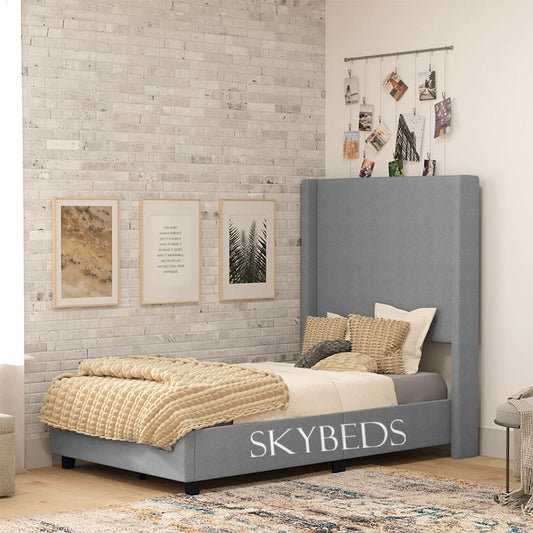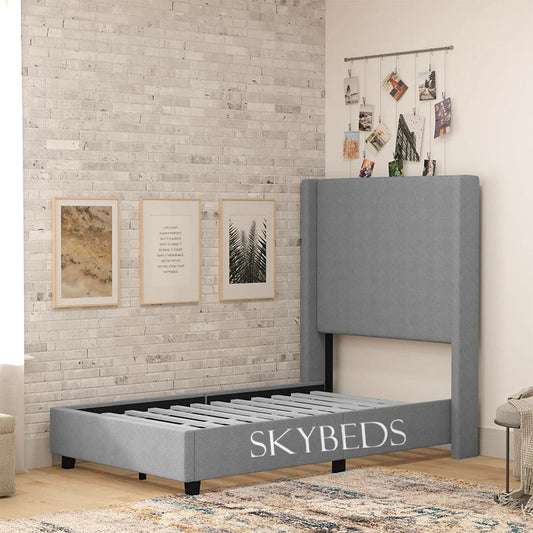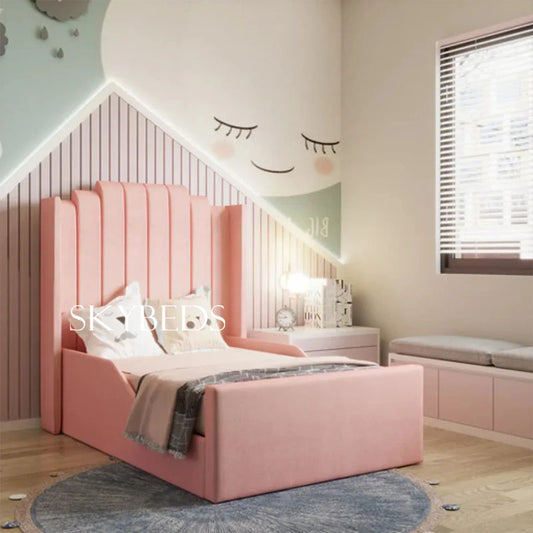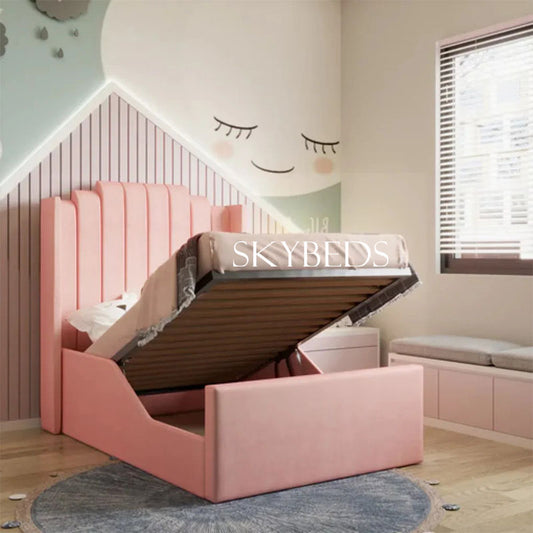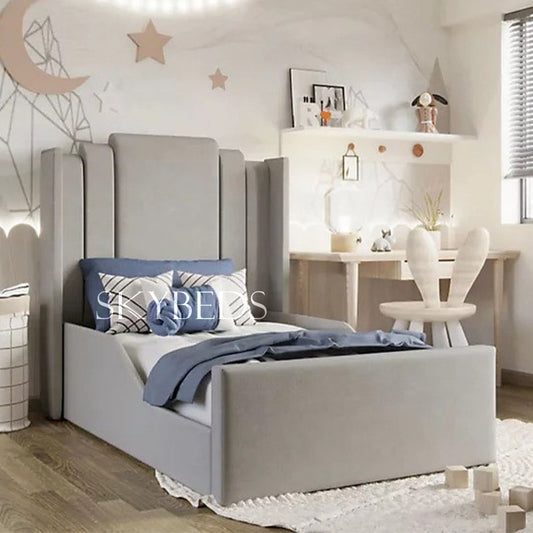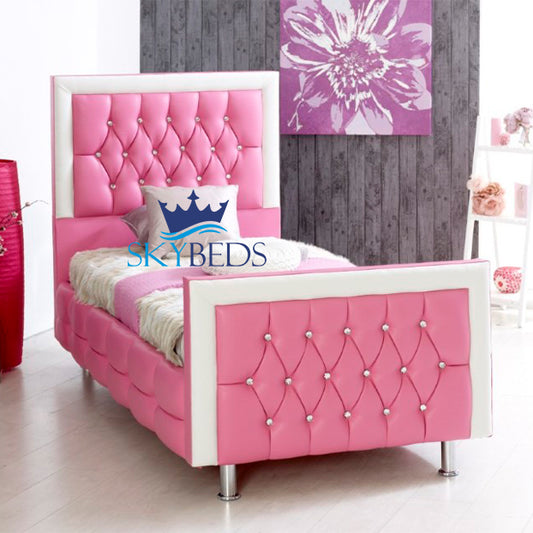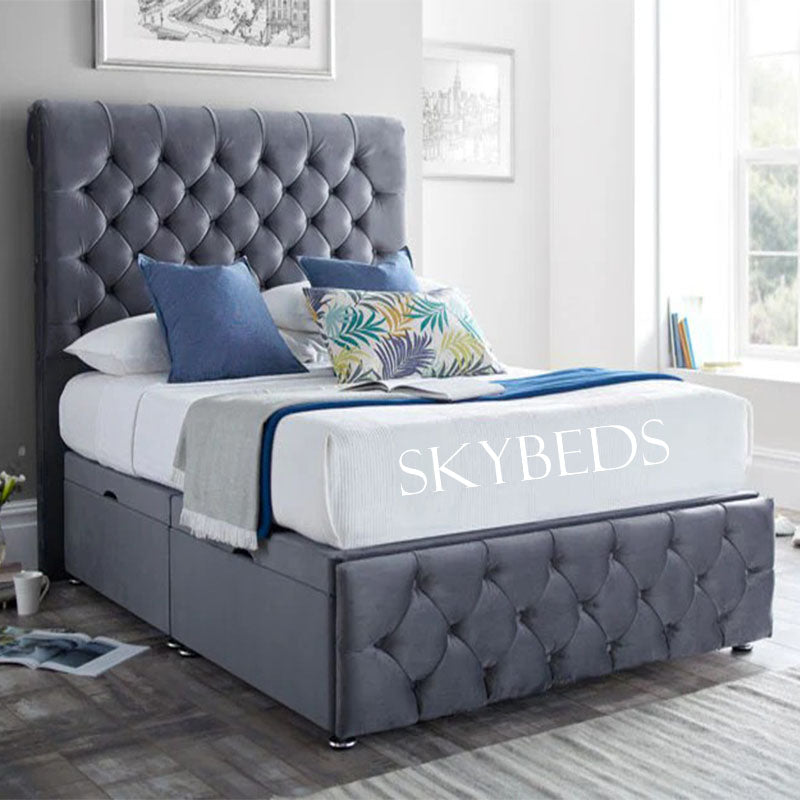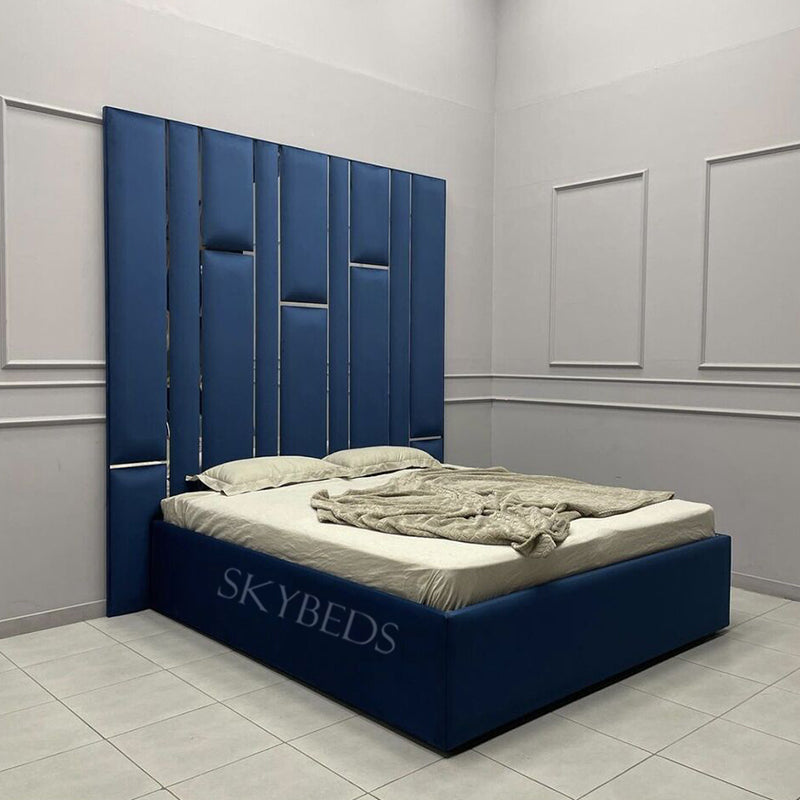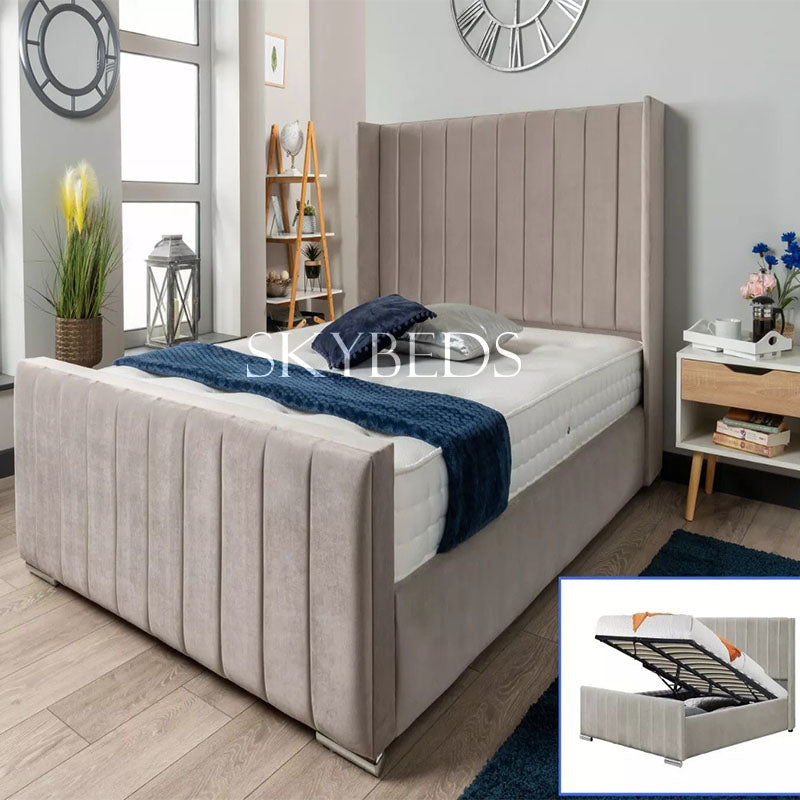-
Six Vertical Panel Toddler Gray Bed Frame
- Regular price
- £250.00
- Regular price
-
- Sale price
- £250.00
- Unit price
- per
-
Luke Wingback Bespoke Childrens Bed Frame
- Regular price
- £250.00
- Regular price
-
- Sale price
- £250.00
- Unit price
- per
-
-
Gray Kids Bed Frame with Wingback Headboard
- Regular price
- £299.99
- Regular price
-
- Sale price
- £299.99
- Unit price
- per
-
-
Bambi Divan Style Kids Bed Frame
- Regular price
- £200.00
- Regular price
-
- Sale price
- £200.00
- Unit price
- per
-
Koko Divan Bed Set with Drawer Option
- Regular price
- £199.00
- Regular price
-
- Sale price
- £199.00
- Unit price
- per
-
Princess Pink Leather Bed Frame
- Regular price
- £190.00
- Regular price
-
- Sale price
- £190.00
- Unit price
- per
Kids Beds
What Are the types of kids beds?
Kids beds come in a range of fun designs to suit every child's needs. Toddler beds are the best fit for little ones transitioning from a crib. These beds are lower to the ground and come with side rails, making them safe and easy for young kids to get in and out. As children grow, they often move up to single beds, which provide plenty of space for sleeping and can last throughout childhood.
Bunk beds are great for siblings sharing a room, allowing for efficient use of limited space. They stack one bed on top of another, making bedtime exciting!
Loft beds are similar but have open space underneath that can be used for a play area or study zone.
Cabin beds also offer storage or a small desk below the bed.
Each type of bed is designed to provide comfort while enhancing the room's style.
What age are kids beds for?
Kids beds cater to children of all ages, from toddlers to teens. Toddler beds are specifically designed for little ones aged 2 to 5, providing a safe and cosy sleeping environment as they transition away from cribs. After that, most children move to single beds around age 4, which can accommodate them well into their early teenage years.
Bunk beds are often recommended for sleepovers and sharing, starting around age 6. These beds are both fun and practical for siblings or friends sharing a room. As children reach their pre-teen years, they may prefer loft or cabin beds featuring extra storage or desk space to suit their growing needs. This timeline allows for safe, comfortable, and enjoyable sleeping arrangements tailored to children’s development.
You must visit Sky Beds, where we offer a wide range of styles that are suitable for every age!
What size are kids beds UK?
In the UK, childrens beds come in standard sizes that cater to every age group. Toddler beds typically utilize a mattress measuring around 70cm x 140cm, ideal for children aged 2 to 5 years. As kids grow, most transition to single beds, which measure 90cm x 190cm. This size generally fits children from the age of 4 and can accommodate them comfortably as they grow into their teens. For those with shared rooms, bunk beds use the same measurements as single beds but stack them to save space. As you consider the right size for your child, remember to keep comfort and safety in mind.
What age do kids get a full size bed?
Most children transition to a full-size bed around the ages of 4 to 10. At this age, kids are usually tall enough and big enough to comfortably fit in a full-size bed. While some children may still find a single bed sufficient, others may feel cramped as they grow. The average height for this transition is when children reach approximately three feet tall. The decision to switch should also depend on your child’s comfort and sleeping habits. If your child frequently complains about being uncomfortable or is starting to outgrow their bedding, it may be time to upgrade.
Do kids need a double bed?
A double bed is not necessarily a must for all kids, but it can be a great choice, depending on your child’s needs. If you have space and want extra movement room, a double bed can be a perfect fit.
Kids who are older or those who enjoy having friends over for sleepovers might benefit from a double bed, offering them and their guests comfortable sleeping arrangements. A single bed is enough for many families until kids reach their teen years. A double bed can greatly enhance their comfort if your child is restless or prefers to sprawl while sleeping.
When to switch toddler to full size bed?
Choosing when to switch your toddler to a full-size bed is a big decision for parents. Most experts recommend making the transition when your child is around 3 years old. This age is typically when children are developmentally ready to move to a larger bed. Signs that your child is ready include climbing out of their crib consistently or expressing a desire for a new bed. Another factor to consider is your child’s size. If your child is nearing the weight limit of their toddler bed or getting too tall, it’s time to switch to a full-size bed.
Are loft beds a good idea for kids?
Loft beds can be a great idea for kids, especially when space is limited. They enhance the bed, creating room underneath for storage, a desk, or a play area. This design maximises usable floor space in smaller rooms. Many children love the fun of sleeping high up, which can feel like their very own treehouse right in their bedroom!
However, loft beds are unsuitable for younger children under six due to safety concerns. It's crucial that your child is mature enough to understand the importance of staying safe while using a loft bed. Parents should also check ceiling heights to ensure comfort and safety. Overall, if your child is excited about having their own elevated bed and the room can accommodate it, a loft bed can be a fun and practical choice. Sky Beds features a variety of loft bed options that can fit perfectly in your child’s space. Check them out for stylish solutions today!
How safe are bunk beds for kids?
Bunk beds can be a fun and space-saving option for kids' bedrooms, but safety is a major concern for parents. Most bunk bed-related injuries occur from falls while sleeping or playing. Falls from the top bunk can lead to more severe injuries than those associated with standard beds due to the height difference. Safety guidelines recommend that children younger than 6 should not sleep in the top bunk, as they often lack the coordination necessary to navigate the height and can be more vulnerable to accidents.
Why are floor beds good for kids?
Floor beds are rapidly gaining popularity among parents for their various benefits. One of the primary advantages is that they promote independence in young children. With a floor bed, kids can get in and out of bed easily, fostering a sense of autonomy that encourages them to explore their environment safely. This setup helps to develop their gross motor skills and body awareness, which is vital during their formative years.
These beds create a comfortable, safe space for children to play and learn on the same level as the rest of their surroundings. Unlike traditional beds, which may feel confined, floor beds provide a welcoming area for activity.
What age do kids use bunk beds?
Bunk beds are typically suitable for children aged 6 and up. Experts suggest that children under the age of 6 may not have the necessary coordination and awareness to safely navigate the height of a bunk bed, particularly when using a ladder. For younger children, it's common to place them in the bottom bunk while an older sibling or an adult occupies the top.
A child's readiness for a bunk bed also depends on their maturity level and ability to understand safety rules. The transition to a top bunk usually takes place between the ages of 6 and 8 when kids start demonstrating the coordination and maturity required to use the bed safely. For those sharing rooms, bunk beds can offer a fun and efficient space-saving solution. Check out Sky Beds for a range of stylish and secure bunk bed options!
What type of mattress is best for kids?
Several factors will dictate the best choice when selecting a mattress for kids. Generally, innerspring and hybrid mattresses are recommended due to their durability and support.
Hybrid mattresses combine foam layers with an innerspring core, offering good pressure relief and breathability. Memory foam mattresses can also be suitable for older kids, providing a comfortable sleeping surface that adapts to their body shape.
Children are usually safer on firmer mattresses until they reach school age. For younger kids, a medium-firm option is advisable, while older kids, particularly those over 8, may start to prefer softer mattresses that meet their comfort needs. It is important to select a mattress that is appropriately sized for their bed and allows for growth.


